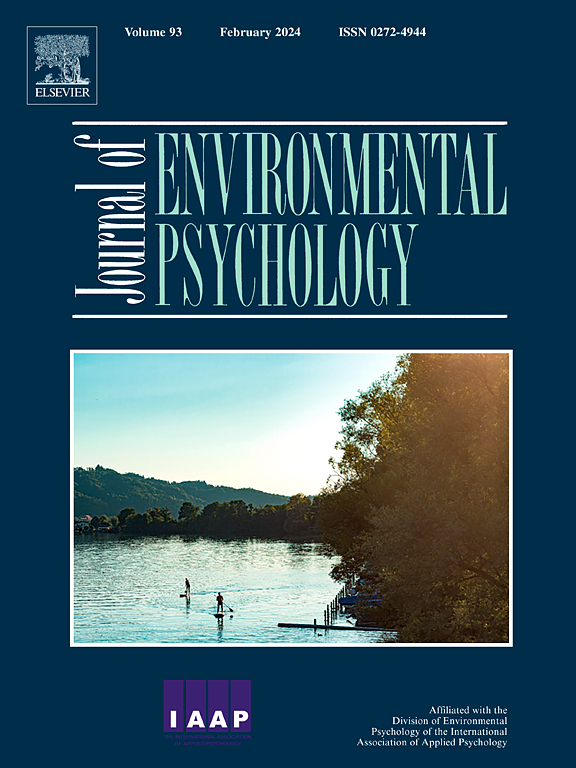Children's moral judgments and reasoning regarding environmentally harmful behaviors: Variation by victim type and moderation effect of connectedness to nature
IF 6.1
1区 心理学
Q1 ENVIRONMENTAL STUDIES
引用次数: 0
Abstract
This study explored the differences in young children's moral judgments regarding environmentally harmful behaviors based on victim type and the moderation effect of connectedness to nature (CN). Further, this study investigated which reasoning types (ecocentric, anthropocentric, and non-environmental) significantly explained children's moral judgment. This study included 185 five-year-old Korean children and their mothers. The children participated in two interview sessions. In one session, they were randomly assigned to one of five groups—no video or video with unspecified, human, animal, or plant victim. In another session, they completed a Korean sentence comprehension test and a task assessing their recognition of animals and plants from the video. Mothers responded to a survey on their children's CN and engagement in pro-environmental activities. A generalized Linear Mixed Model was employed using SPSS Win 27.0. Children's judgment of environmentally harmful behaviors was more negative when presented with unspecified or human victims. The reasoning for their moral judgments and the moderating role of their CN varied by victim type. Environmental reasoning, especially ecocentric reasoning, was crucial in explaining children's moral judgments of environmentally harmful behaviors. Thus, considering victims and environmental reasoning types is important for environmental education for sustainable development for young children, emphasizing the need to enhance children's CN.
求助全文
约1分钟内获得全文
求助全文
来源期刊

Journal of Environmental Psychology
Multiple-
CiteScore
10.60
自引率
8.70%
发文量
140
审稿时长
62 days
期刊介绍:
The Journal of Environmental Psychology is the premier journal in the field, serving individuals in a wide range of disciplines who have an interest in the scientific study of the transactions and interrelationships between people and their surroundings (including built, social, natural and virtual environments, the use and abuse of nature and natural resources, and sustainability-related behavior). The journal publishes internationally contributed empirical studies and reviews of research on these topics that advance new insights. As an important forum for the field, the journal publishes some of the most influential papers in the discipline that reflect the scientific development of environmental psychology. Contributions on theoretical, methodological, and practical aspects of all human-environment interactions are welcome, along with innovative or interdisciplinary approaches that have a psychological emphasis. Research areas include: •Psychological and behavioral aspects of people and nature •Cognitive mapping, spatial cognition and wayfinding •Ecological consequences of human actions •Theories of place, place attachment, and place identity •Environmental risks and hazards: perception, behavior, and management •Perception and evaluation of buildings and natural landscapes •Effects of physical and natural settings on human cognition and health •Theories of proenvironmental behavior, norms, attitudes, and personality •Psychology of sustainability and climate change •Psychological aspects of resource management and crises •Social use of space: crowding, privacy, territoriality, personal space •Design of, and experiences related to, the physical aspects of workplaces, schools, residences, public buildings and public space
 求助内容:
求助内容: 应助结果提醒方式:
应助结果提醒方式:


